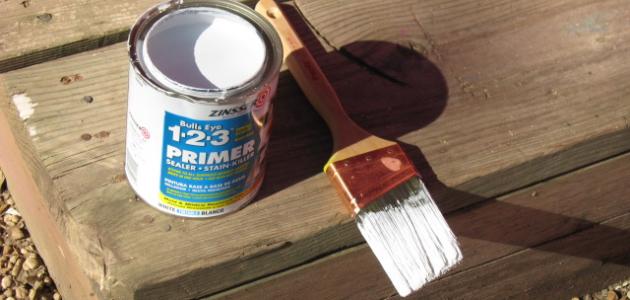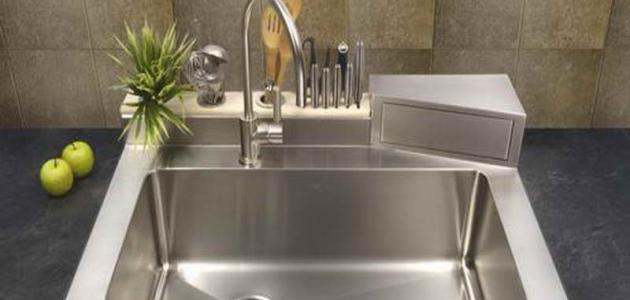Painting wooden doors
Painting wooden doors helps give them a new look and add a personal touch to them by renewing their colors, not to mention the possibility of reducing their maintenance costs over time and protecting them from corrosion and cracking. The task of painting doors in general is considered a simple task if the appropriate materials and tools are available for that work. There was skill and willingness to carry out this task.
How to paint wooden doors
The task of painting wooden doors goes through two important stages: the stage of preparing tools and materials, and the implementation stage. Knowing these stages makes it easier to perform the task. As for the stage of preparing tools and materials, it is as follows:
Preparing tools and equipment
The tools and materials required to paint wooden doors are as follows:
- Suitable size paint brush.
- A bottle of paint in the desired color, preferably high quality, intended for painting wooden doors.
- A bottle of foundation paint, preferably also intended for foundations on wooden doors.
- A clean cloth to clean the doors before painting them.
- Small brush for tight spaces.
- Fine-grit sandpaper.
- Flexible sandpaper.
- Protective face mask.
- Old clothes.
- Pieces of newspaper or towels.
- Wood putty.
Steps to paint wooden doors
The steps for painting wooden doors can be summarized as follows:
Read also:How do I remove ink stains from clothes?- Wearing old clothes that the individual does not need; To avoid dirtying new clothes.
- Place pieces of newspaper or towels around the work area; To protect floors from paint contamination.
- Wipe wooden doors with a household cleaner and a clean cloth to remove dust and dirt stuck in them.
- Wear a dust mask on the face; To protect it from scattered wood dust when starting the wood sanding process.
- Fill the cracks and holes in the door with wood putty, and leave it until it dries completely.
- Sand the door and edges with sandpaper; This is to facilitate the adhesion of the new paint to the old paint if the door was previously painted, and if the door is not painted, sanding it helps remove the knots and burrs on its surface, and straighten the sharp edges of the wood.
- Use flexible sandpaper or a sanding sponge to reach curves and tight corners in the door. This is because it is difficult to reach it with hard sandpaper, with the necessity of checking the surface of the sandpaper from time to time, and working to change it if its grains become damaged or fade during work.
- Wipe the door of dust resulting from the sanding process using a soft brush or a dry cloth.
- Paint the door with a first layer of base paint, knowing that this stage is important if the wooden door was not previously painted, but if it was painted, this stage can be skipped.
- Leave the base paint overnight until it dries completely.
- Sand the door with a piece of sandpaper again until its surface is smooth, then wipe off the dust resulting from the sanding with a dry cloth.
- Dip the paint brush in water until it is completely saturated before using it with water-based paint. However, if the paint is oily, it can be dipped in oil paint thinner, and its bristles bent back and forth from time to time. This will help the bristles not harden after work, and preserve them for a longer period.
- Fill the gaps between the door frame and the wall using a water-based putty material, after placing it in a gun designated for this purpose, then discharging the material along the hole to place a sufficient amount of it in the space in proportion to the size of the hole.
- Start by painting the outer frame of the door in one direction, from the bottom to the top, taking care to use a brush suitable for this area, and not to load it with a large amount of paint, lest this cause it to fall on the floor and contaminate it.
- Paint the door using a cylindrical sponge brush with a length of 2.50 centimeters, starting from the bottom to the top, taking care not to put pressure on the brush while passing it over the surface, lest the paint clump in one area rather than the other while working, and unwanted lines in the paint are formed.
- Leave the paint for a sufficient period of time until it dries completely, then apply a second layer of paint to clarify the color further and reach the desired degree.
Types of wood paint
Some people believe that regular paint can be used to color all surfaces, but there are types of paint designated for painting wood, and other types designated for coloring other surfaces. As for the types of paint designated for wood, they are as follows:
Read also:Remove bad odors from the house- Oil paint: Many people prefer to use oil paint to paint wooden furniture; Because it makes the wood surface smooth, whether the paint used is glossy or matte, and it is not easily scratched. Not to mention that most furniture painted with this type does not need more than one layer of paint to obtain the desired color and shine, but it takes longer to dry.
- Latex paint: This type of paint is easier to work with than oil paint. Because it is characterized by its light weight, quick drying on wooden surfaces, and also ease of use on wood, it is also easy to clean, as it can be cleaned with water and regular soap, which makes the task of correcting its color and completing the work on it quick and easy, but it is taken into account that this type requires a number of times. It is more suitable for paint to reach the desired color and shine, and it is also highly susceptible to cracking and scratching if used repeatedly.
- Water-based paint: Water-based paint is considered one of the most common types of paint used to paint wood, and it is one of the easiest types of paint for this purpose. Because the wood to be painted with this type does not require many treatment steps, unless the wood is previously painted with oil paint, not to mention that it dries quickly, and does not cause mold to the wood fibers, or the appearance of an odor from them, and it is also resistant to fading or cracking, and is one of its most famous types. Chalk paint, milk paint, and acrylic paint.









